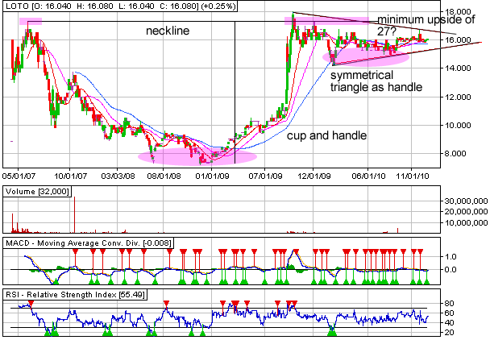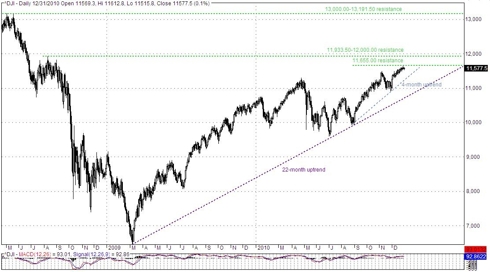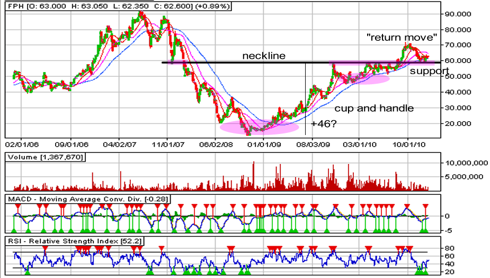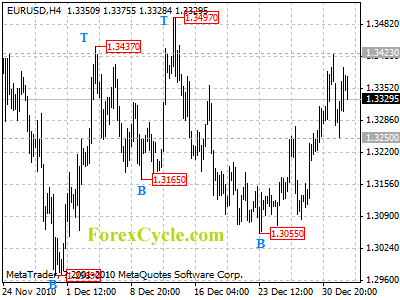Source: ForexYard
The US dollar slid against the euro following a rally in global equity markets. The rally prompted investors to turn to higher yielding riskier assets and away from the USD. With recent market optimism, traders may continue to see a small downward trend in the dollar as its positions are unwound in exchange for higher yielding assets.
Economic News
USD – Dollar Drops on Renewed Risk Appetite
The US dollar slipped against the EUR and CHF Monday, erasing some early morning gains after encouraging US economic data sent traders into riskier, higher-yielding assets. By yesterday’s close, the greenback had fallen against the EUR, pushing the oft-traded currency pair to 1.3360. The dollar experienced similar behavior against the Swiss franc, closing at 1.5485.
The ISM manufacturing index rose to 57.0 last month, nearly in line with the consensus forecast of 57.1. The manufacturing sector has been steadily growing in recent months, indicating the pace of economic recovery could be picking up. November construction spending also rose for a third straight month, providing a positive sign for US growth.
The economic reports from Monday bolstered US Treasury yields, but higher yields weren’t enough of an incentive to get the few active market participants to continue buying dollars. Instead, traders saw the upbeat news as a reason to search out riskier assets. US stocks and crude oil were among the biggest beneficiaries of increased risk demand.
Looking ahead to today, the most important economic indicators scheduled to be released from the US are the Factory Orders at 15:00 GMT. Traders will be paying close attention to today’s announcement as a stronger than expected result may continue to boost risk appetite in the short-term.
EUR – EUR Rises on All Fronts
The euro rallied broadly against most of it major currency pairs on Monday as US stocks rose, though gains were likely temporary given doubts about the ability of euro zone members to tap bond markets. The 17-nation currency extended gains against the US dollar and closed around 1.3350. The EUR experienced similar behavior against the GBP as the pair rose from 0.8540 to 0.8625 by day’s end.
Thinned trading due to holidays in Tokyo and London added to the volatility in the euro. The addition of Estonia to the euro zone has also helped add positive sentiment to the region.
The EUR was affected by a US stock market rally and a bearish dollar. Growth in stocks led investors to buy-back into the EUR, as they looked for returns on buying commodity-linked and higher-yielding currencies in Monday’s trading.
Turning to today, traders will want to pay particular attention to the US FOMC Meeting Minutes, scheduled to be released at 19:00 GMT. Should the meeting minutes indicate further improvements in the US economy, the euro could maintain its current course, and could even push the 1.3500 resistance level against the greenback.
JPY – Yen Lower vs. Major Currency Pairs
The Japanese yen saw a very bearish trading session yesterday, losing ground against all of its currency crosses. The JPY fell against the USD and closed around 81.75, Moreover; the yen lost almost 100 points versus the EUR, closing at 109.10; and just about 80 points versus the CHF.
The JPY’s trends will be affected by the rallies of its primary currency pairs today. It seems that the USD and EUR are expected to continue trading volatile today, especially against the Japanese currency.
Traders should keep a close look on the news coming from the US and Europe as these economies will be the deciding factors in the JPY’s movement today, especially the FOMC Meeting Minutes at 19:00 GMT. It is also advisable for traders to follow any unexpected comments coming from key Japanese governmental figures, as this is also likely to lead to further JPY volatility.
Crude Oil – Crude Oil Trades at 27-Month High
Oil prices rose to a 27-month peak on Monday as upbeat European and US manufacturing data, and forecasts for cold weather, reinforced optimism about economic and energy demand growth. Crude oil rose to $92.56 a barrel, its highest settlement since early October 2008, before rebounding back to $91.51.
Manufacturing in the United States and Europe accelerated in December and growth in China and India slowed to a more sustainable level, helping to fuel a move by investors into commodity-link and higher-yielding currencies.
Technical News
EUR/USD
The 4-hour chart is showing mixed signals with its RSI fluctuating in neutral territory. However, there is a fresh bearish cross forming on the daily chart’s Slow Stochastic indicating a bearish correction might take place in the nearest future. Going short might be a wise choice.
GBP/USD
The pair has been range-trading for a while now, with no specific direction. The daily chart’s Slow Stochastic is providing us with mixed signals. The 4-hour chart does not provide a clear direction either. Waiting for a clearer sign on the hourlies chart might be a good short-term strategy today.
USD/JPY
The USD/JPY cross experienced a bullish trend yesterday. However, it seems that this trend may be coming to an end. The Williams Percent Range of the 4-hour chart shows the pair floating in the over-bought territory, indicating that a downward correction could happen anytime soon. Going short with tight stops might be a wise choice.
USD/CHF
The pair has recorded much bearish behavior in the past several days. However, the technical data indicates that this trend may reverse anytime soon. For example, the daily chart’s Stochastic (slow) indicates that a bullish reversal is imminent. An upward trend today is also supported by the RSI. Going long with tight stops may pay off.
The Wild Card
Crude Oil
Crude Oil prices rose significantly in the last two days and peaked at $92.50 a barrel. However, the 4-hour chart’s RSI is floating in the over-bought territory suggesting that the recent bullish trend is losing steam and a bearish correction may be impending. This might be a good opportunity for forex traders to enter the new trend at a very early stage.
Forex Market Analysis provided by ForexYard.
© 2006 by FxYard Ltd
Disclaimer: Trading Foreign Exchange carries a high level of risk and may not be suitable for all investors. There is a possibility that you could sustain a loss of all of your investment and therefore you should not invest money that you cannot afford to lose. You should be aware of all the risks associated with Foreign Exchange trading.





